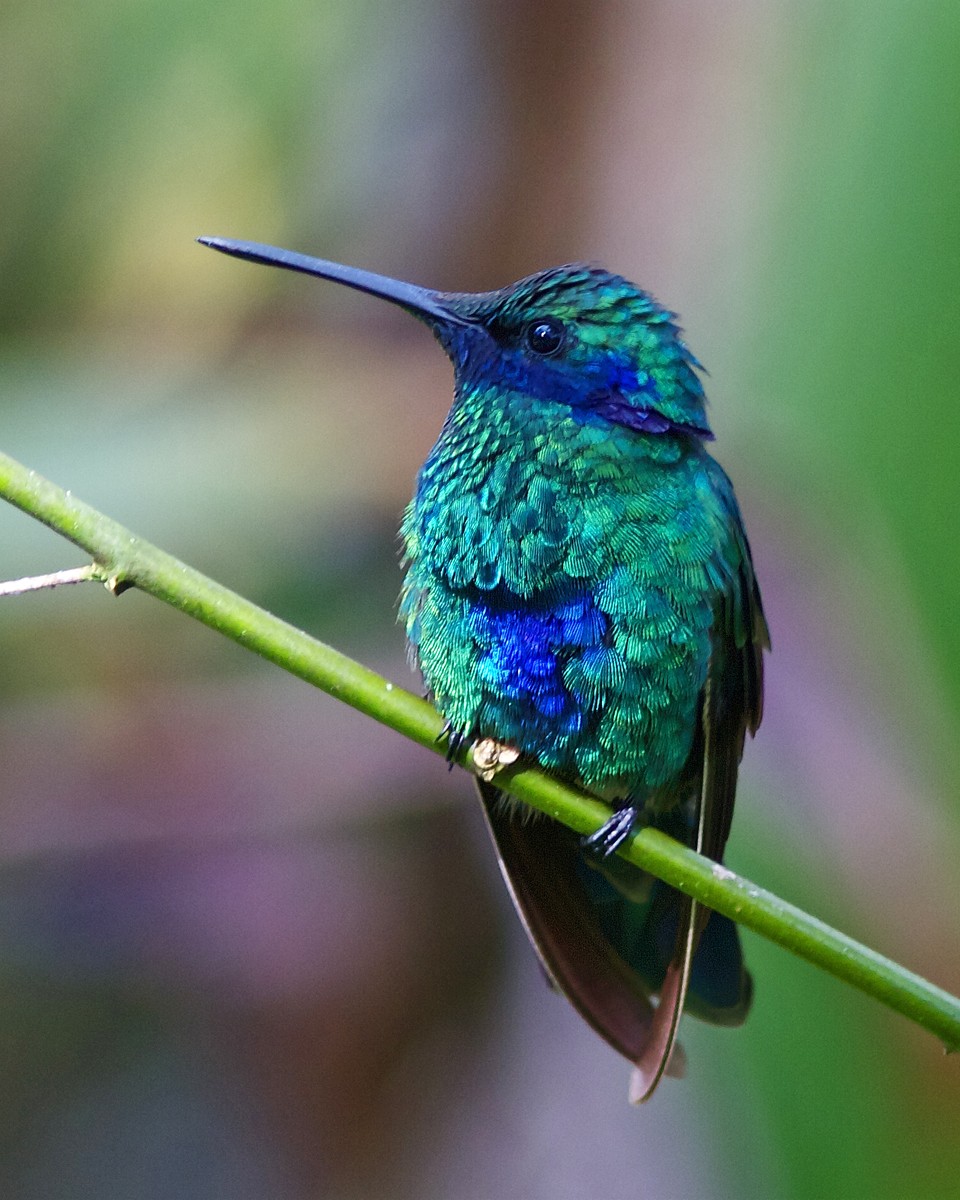Sparkling Violetear
A species of Violet-ears Scientific name : Colibri coruscans Genus : Violet-ears
Sparkling Violetear, A species of Violet-ears
Botanical name: Colibri coruscans
Genus: Violet-ears
Content
Description People often ask General Info
 Photo By Joseph C Boone , used under CC-BY-SA-3.0 /Cropped and compressed from original
Photo By Joseph C Boone , used under CC-BY-SA-3.0 /Cropped and compressed from original Description
The sparkling violetear is the largest violetear at 13 to 15 cm (5–6 in) long. Male birds weigh 7.7 to 8.5 grams (0.27 to 0.3 oz) while females weigh from ounces 6.7 to 7.5 grams (0.24 to 0.26 oz). This hummingbird resembles the lesser violetear, but that species generally prefers more humid habitats, is obviously smaller and lacks the distinct purple-blue chest-spot and gorget of the sparkling violetear. According to one study, it has the smallest mean blood-air barrier thickness (0.183 µm) and the highest mass-specific respiratory surface area in birds (87 cm²/g). 
Size
14 cm
Colors
Brown
Black
Green
Blue
Purple
Nest Placement
Shrub
Feeding Habits
Sparkling Violetear primarily feeds on nectar and insects. It employs hovering techniques to access flowers and exhibits a preference for high-energy foods. Unique adaptations include a specialized bill and a rapid-fire tongue for efficient nectar extraction.
Habitat
Sparkling Violetear thrives in a diversity of semi-open habitats, showing a particular preference for forest edges and open woodlands, including coniferous and evergreen eucalyptus forests. These birds are well-adapted to human-altered landscapes as well, being prevalent in flowering gardens, parks, and plantations. They are also found in high-elevation ecosystems, such as sub-páramo and páramo regions, spanning elevations from 1700 to 4500 meters. This adaptability allows them to be a common sight across broad geographic highland regions.
Dite type
Nectivorous
People often ask
General Info
Feeding Habits
Bird food type
Behavior
Sparkling violetears are solitary and aggressive, often defending their territory while singing throughout the day. Breeding seasons vary across territories, with birds in Venezuela mating from July through October. Unlike most male hummingbirds, male sparkling violetears may participate in caring for newborns. The mother lays two eggs, with hatching within two weeks and fledging three weeks later. 
Species Status
Not globally threatened.
Scientific Classification
Phylum
Chordates Class
Birds Order
Swifts and hummingbirds Family
Hummingbirds Genus
Violet-ears Species
Sparkling Violetear